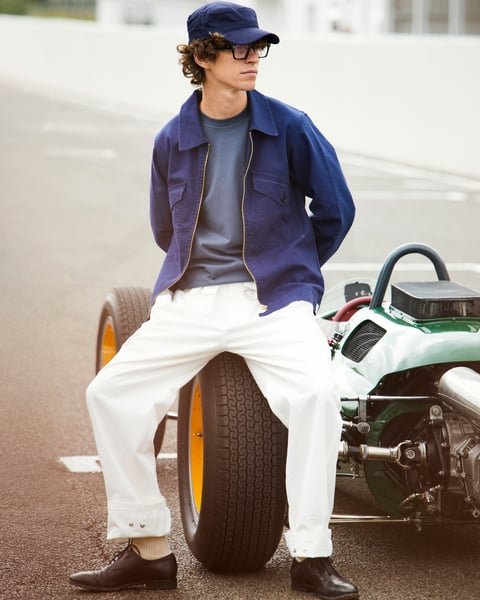The Goodwood Test: Honda Fireblade 25th Anniversary
Each week our team of experienced senior road testers pick out a new model from the world of innovative, premium and performance badges, and put it through its paces.

Heritage
This year’s launch of a new-generation CBR1000RR Fireblade is timely, coming 25 years after the original CBR900RR FireBlade shook the superbike world with its focus on lightweight and agility rather than pure power. A perfect excuse, then, for Honda to celebrate the anniversary by gathering ’Blades from different eras to show how the famous family has evolved.
Alongside the original, red-white-and-blue 1992 model at the Rockingham revival is a “Foxeye” model of 1996, named after its distinctive headlights; a year-2000 model that saw capacity increase to 929cc; and the 2004-model CBR1000RR Fireblade with 998cc motor and under-seat exhaust system. There’s also a snub-nosed model that returned the ’Blade to top of the class in 2008, plus standard and SP versions of the latest in the line.
Design
The Fireblade has evolved a long way while maintaining charismatic chief designer Tadao Baba’s light-is-might ethos, as well as its basic layout of 16-valve liquid-cooled four-cylinder engine and aluminium beam-framed chassis. That first CBR900RR had a capacity of 893cc and made 124bhp – modest by superbike standards even in 1992. But it was compact, weighed just 185kg dry, and earned a reputation for fast and flighty performance, partly due to its 16-inch diameter front wheel.
By 2000 the maximum power output was up to 150bhp, and the ’Blade had gained upside-down forks and a 17-inch front wheel like its rivals. In 2008 the peak figure rose to 178bhp, the frame was redesigned yet again, and the front brake featured radial monobloc calipers. But the essential Fireblade format remained. Even the latest CBR1000RR SP, with power up to 189bhp, is notable for its compact dimensions, and for saving weight with thinner bodywork plus titanium fuel tank and silencer.
Performance
It says much about the Fireblade that even the first, 25-year-old model still seems quick, light and racy, albeit more like a middleweight by today’s standards. Our anniversary bash RR’s slightly slipping clutch and sub-par front brake can’t prevent it being a riot to ride, emphasising just what a star the Honda was when new. The motor feels slightly buzzy by modern standards but the agile, aggressive character is as addictive as ever.
The Foxeye model’s main changes were visual but the later, year-2000 model’s extra grunt and refinement are immediately obvious. That bike also had a sharp front brake when new, but ours requires a firm squeeze. By contest, the 2008 Fireblade has a superb stopper and feels like a big step forward from the moment it pulls smoothly away, with its front wheel leaving the ground. This year’s model is quicker still, its extra ferocity backed by traction control plus, in the SP’s case, push-button tweaking of engine mode and suspension settings.
Passion
A quarter of a century on, there’s something magical about the original CBR900RR FireBlade, which transformed superbike development and still generates adrenaline in bucketloads. The mid-Nineties Foxeye models remain deservedly popular, especially 1994’s so-called “Urban Tiger” with its striped orange paintwork. Those earlier ’Blades had the benefit of being sharpest of the superbike pack, before Yamaha’s YZF-R1 and Suzuki’s GSX-R1000 arrived to add competition.
All the other Fireblade models have their supporters. The 2004 bike remains a favourite, its sharp nose and under-seat pipe echoing the style of Rossi’s all-conquering MotoGP racer. But a blast on the sweet 2008-model ’Blade highlights the benefits of more recent refinement. And for track use, in particular, the latest Fireblade SP is way out ahead. Perhaps the greatest achievement of Honda’s famous family is that in all this time there hasn’t been a single bad one.
Price of our bike: 2017 CBR1000RR Fireblade SP £19,125; standard Fireblade £15,225. A clean, original 1992 CBR900RR FireBlade costs around £5000
The Goodwood Test
Honda
Fireblade
























